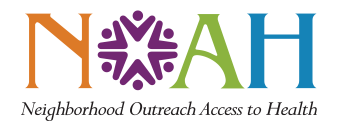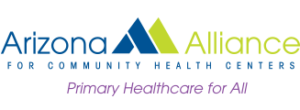The Defeat Diabetes Foundation (DDF) has named April Defeat Diabetes Month. Defeat Diabetes Month is a time to raise awareness about diabetes prevention, management, and treatment throughout our communities. At NOAH, we are here to help you through all aspects of defeating diabetes, from awareness to treatment.
There are multiple forms of diabetes, but the two most common forms are called type 1 and type 2 diabetes mellitus. Both forms can occur at any age, but a child is typically more likely to be diagnosed with type 1 diabetes. However, with childhood obesity rates on the rise, the number of children diagnosed with type 2 diabetes or who are at risk of developing type 2 diabetes later in life is also increasing. According to the DDF, 1 in 3 US children is overweight or obese. 75% of these children will become overweight or obese adults, and 87.5% of adults diagnosed with type 2 diabetes in the US are overweight or obese.
The DDF has created three different steps to help win the fight to defeat diabetes. The three steps include awareness, action, and prevention.
- Awareness – creating awareness of the risk factors, warning signs, and complications.
Diabetes is a chronic disease that is characterized by high levels of glucose (sugar) in the blood. Insulin is needed to help lower the levels of sugar and maintain normal blood sugar levels. Diabetes occurs when insulin is not produced in sufficient amounts or the cells of the body are unable to use the insulin properly. Over time, high blood sugar levels may lead to serious complications such as diseases of the eyes (retinopathy), kidneys (nephropathy), nerves (diabetic neuropathy), and blood vessels (that can eventually lead to poor circulation in the extremities). Diet and lifestyle changes can help decrease the risk of these complications.
Type 1 diabetes is a chronic disease that is almost exclusively based on genetics, and it cannot be prevented. With type 1, the pancreas produces very little or no insulin, leading to high blood sugars. Symptoms include increased urination, excessive thirst, increased appetite, and weight loss.
Type 2 diabetes is highly preventable and can be characterized by insulin resistance, decreased insulin production, or a combination of both. Some of the modifiable risk factors for type 2 diabetes include diet, physical activity, and weight management.
- Action – taking action and providing individuals with the information they need to make the right dietary, lifestyle, and treatment choices to ensure their optimal health.
It’s important to talk with your child’s doctor to find the best treatment plan. Your child’s doctor will talk you through the importance of lifestyle, diet, and medication in order to keep your child’s blood sugar under control. Eating healthy and maintaining an active lifestyle can help manage BOTH type 1 and type 2 diabetes. As mentioned, Type 2 diabetes is highly preventable, so it is even more important to start creating healthy nutrition and lifestyle habits at a young age.
Children who are at risk or are diagnosed with diabetes can live a happy, healthy life through self-management and with an integrative team approach with various medical professionals. An integrated approach with your child’s doctor, a registered dietitian, and a behavioral health specialist can help develop a nutrition, physical activity, and medication plan that can help.
Here are some healthy nutrition tips from The American Academy of Pediatrics:
- Eat at least 5 servings of fruits and vegetables each day.
- Stick with water, avoiding juices and other drinks high in sugars.
- Include high-fiber, whole-grain foods such as brown rice, whole-grain pasta, corns, peas, and breads and cereals at meals. Sweet potatoes are also a good choice.
- Choose lower-fat or fat-free toppings like grated low-fat Parmesan cheese, salsa, herbed cottage cheese, nonfat/low-fat gravy, low-fat sour cream, low-fat salad dressing, or yogurt.
- Select lean meats such as skinless chicken and turkey, fish, lean beef cuts (round, sirloin, chuck, loin, lean ground beef—no more than 15% fat content), and lean pork cuts (tenderloin, chops, ham). Trim off all visible fat. Remove skin from cooked poultry before eating.
- Include healthy oils such as canola or olive oil in your diet. Choose margarine and vegetable oils without trans fats made from canola, corn, sunflower, soybean, or olive oils.
- Use nonstick vegetable sprays when cooking.
- Use fat-free cooking methods such as baking, broiling, grilling, poaching, or steaming when cooking meat, poultry, or fish.
- Serve vegetable and broth-based soups or soups that use nonfat (skim) or low-fat (1%) milk or evaporated skim milk when making cream soups.
- Use the Nutrition Facts label on food packages to find foods with less saturated fat per serving. Pay attention to the serving size as you make choices. Remember that the percent daily values on food labels are based on portion sizes and calorie levels for adults.
- Prevention – take a personal pledge to prevent diabetes in your family and your community.
Feel free to reach out to one of your NOAH Health Centers with any questions you may have. NOAH offers a full range of primary and preventable health services for all ages!
To learn more about the DDF and the prevention and management of diabetes, visit their website at https://defeatdiabetes.org/
To read more about Type 1 Diabetes in children visit https://www.healthychildren.org/English/health-issues/conditions/chronic/Pages/Diabetes.aspx
To learn more about type 2 diabetes and tips for healthy living check out https://www.healthychildren.org/English/health-issues/conditions/chronic/Pages/Type-2-Diabetes-A-Manageable-Epidemic.aspx



